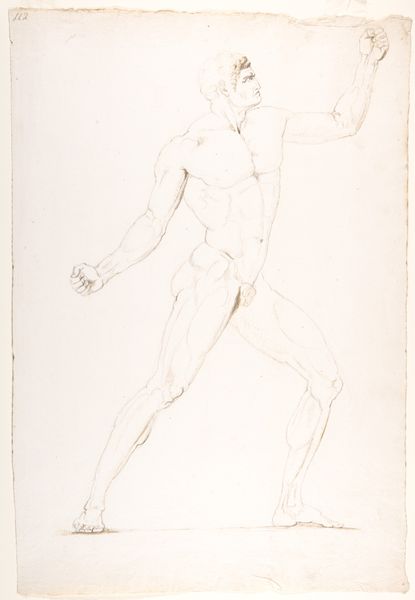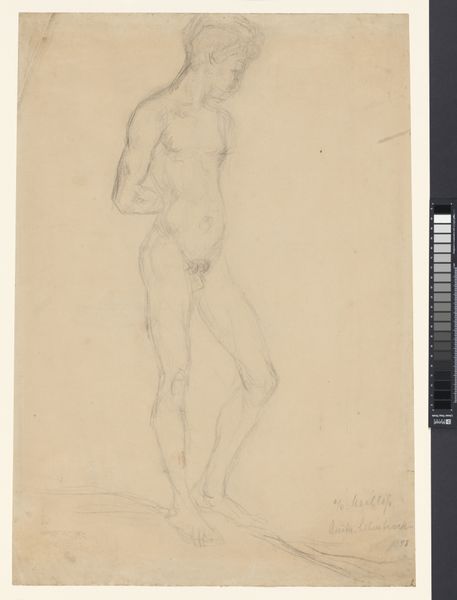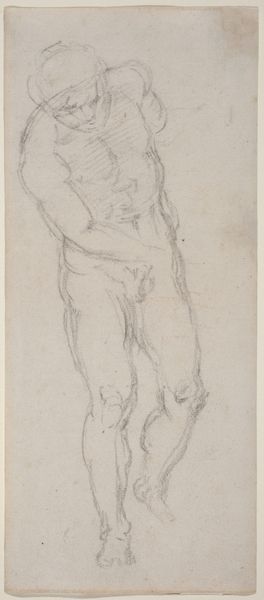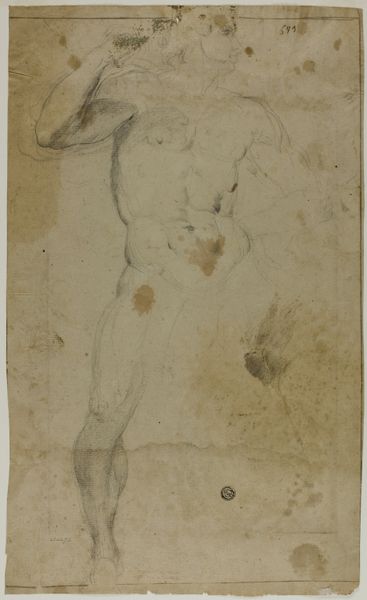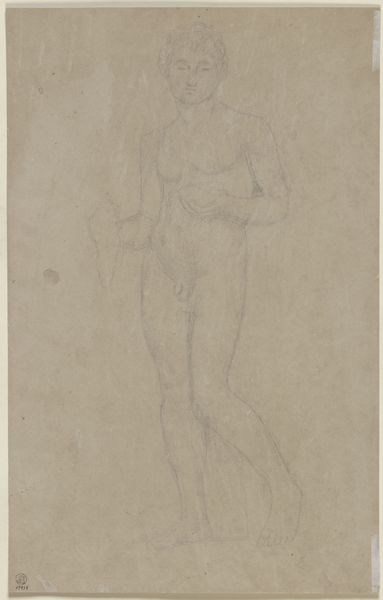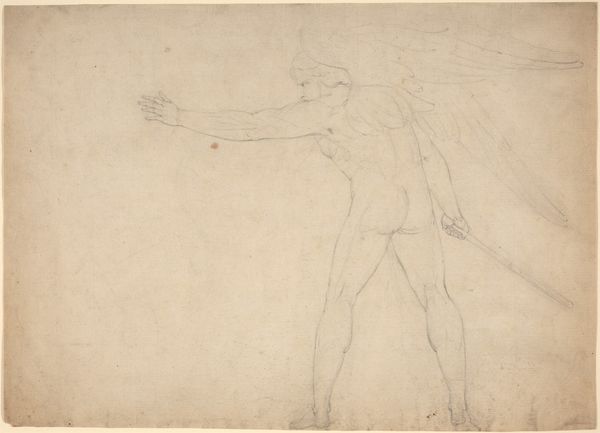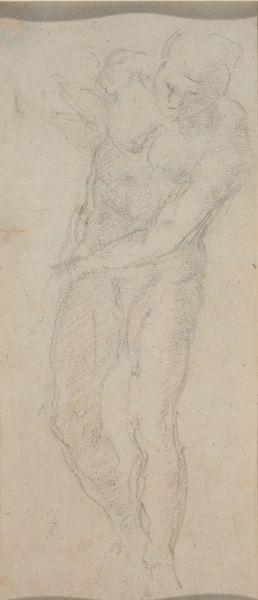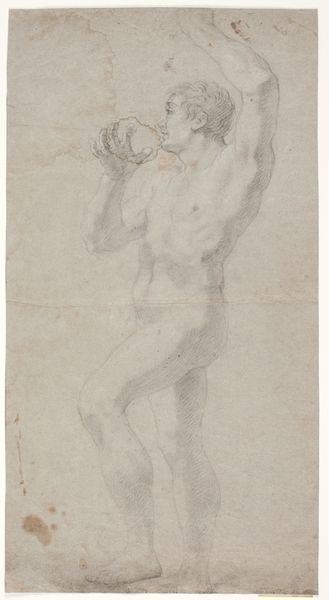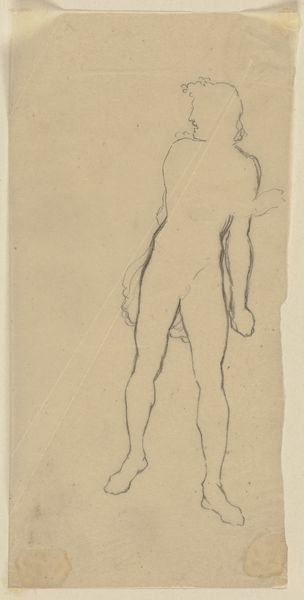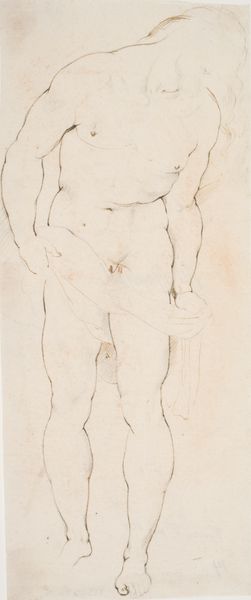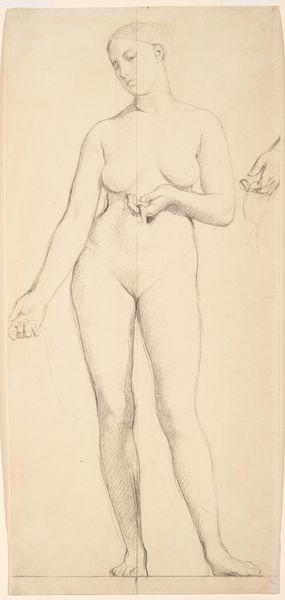
drawing, pencil
#
drawing
#
figuration
#
pencil
#
academic-art
#
nude
#
realism
Dimensions: 304 mm (height) x 197 mm (width) (bladmaal)
Curator: Standing before us is "Stående mandlig model (gips?)," which translates to "Standing Male Model (Plaster?)" a pencil drawing by Dankvart Dreyer, created sometime between 1830 and 1833. Editor: He seems so tentative, almost ghost-like, with those delicate lines. What strikes me most is the posture—poised, yet hesitant. It’s as if he’s about to throw something but can't quite commit. Curator: The "Standing Male Model" reflects Dreyer’s academic training and interest in realism, particularly the emphasis on accurately depicting the human form through the use of nude studies like this one. These types of academic drawings were commonplace within artistic pedagogy during this period. Editor: There's a real vulnerability in portraying a nude figure like this in pencil. No oil paint or grand statement, just pure, raw observation. You know, he feels more like a real person, stripped of all artifice. I appreciate the contrast between the idealism of academic art, and the honest simplicity of this study. It captures an ephemeral, fleeting moment. Curator: It's precisely within the intersection of that academic exercise and personal execution where the work finds its character. In the context of the artist, Dreyer struggled to gain recognition during his lifetime and largely withdrew from the Copenhagen art scene after facing much criticism. It makes one wonder about the impact and acceptance of artistic vision. Editor: Perhaps this is why the sketch carries a subtle energy of rebellion, or perhaps, resignation. Despite technical academic accuracy, it offers a kind of silent resistance. An interesting comment on his historical context, really. Curator: Absolutely, considering how these academic exercises were critical steps to joining the traditional art system. Editor: Seeing it like this, you know, I think I’m seeing more than just a drawing of a nude model now. Curator: Indeed, hopefully our observations bring you to a more meaningful connection to the art piece.
Comments
No comments
Be the first to comment and join the conversation on the ultimate creative platform.
